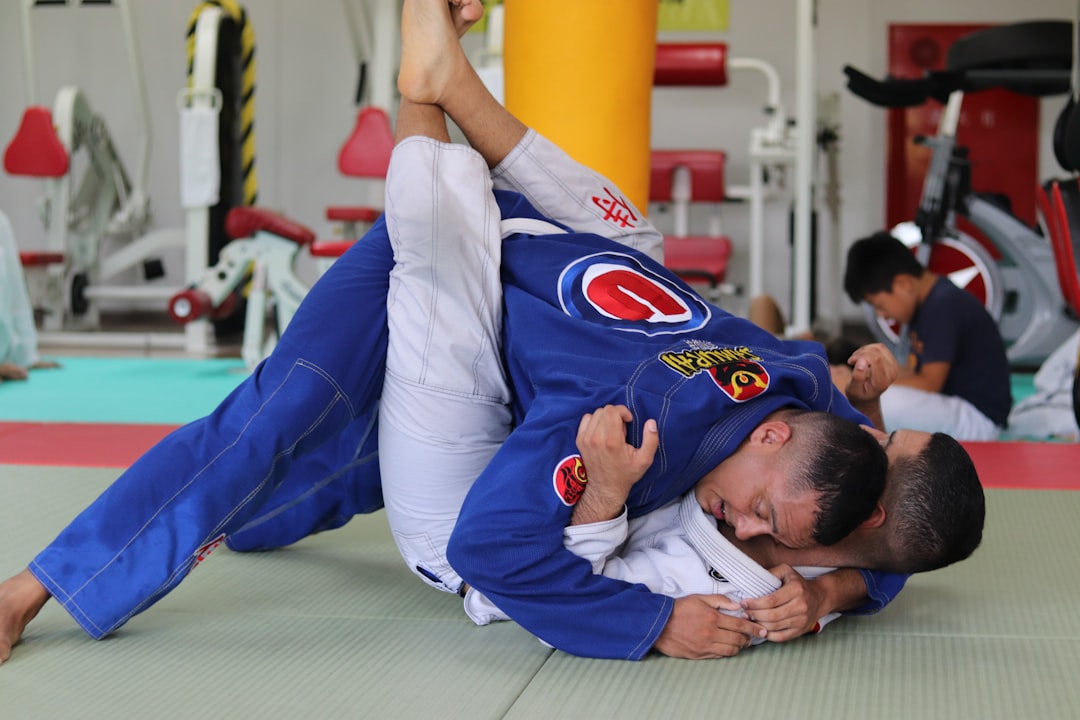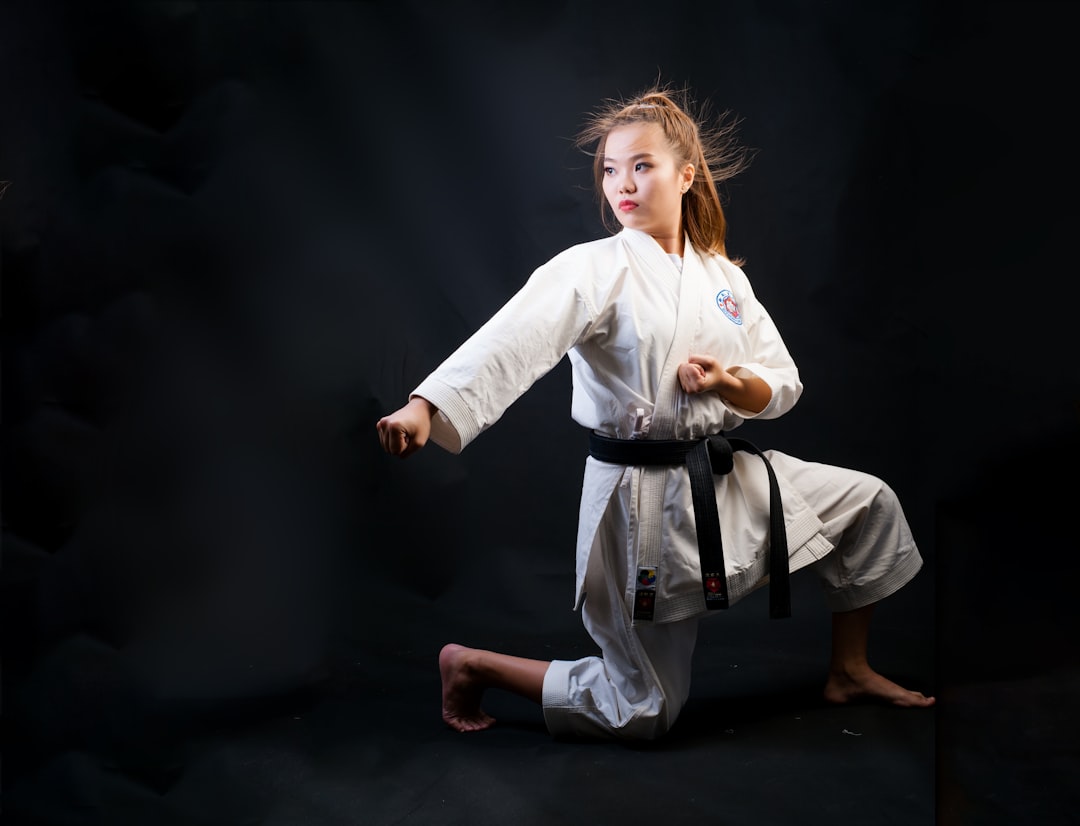The karate suit, or "gi," is more than just training attire—it's a symbol of respect and adherence to martial arts tradition. Originating from the Japanese keiko-gi and adapted for karate, the gi's white color signifies purity and humility, fostering an atmosphere focused on mastering techniques rather than personal distinction. The modern gi is a standardized uniform across various karate schools, crafted from durable, breathable heavy cotton or canvas to ensure comfort and mobility during training. It features a jacket with a straight hem and buttoned front, paired with wide, tapering trousers, designed for optimal movement and to not hinder the practitioner's performance. The gi also reflects the wearer's rank through the obi belt. Proper maintenance is essential for hygiene and longevity, requiring gentle washing in a machine cycle with a mild detergent to maintain its quality and integrity over time.
Karate enthusiasts and practitioners recognize the importance of the garb that accompanies their discipline—the karate suit, or Gi. This article delves into the essential elements of the Gi, tracing its origins from ancient Japan to its modern-day application in various martial arts, including karate. We will explore the specific characteristics that define a traditional Karate suit, offer guidance on selecting and maintaining your Gi, and underscore why understanding this attire is key for both performance and respect within the dojo. Join us as we unravel the significance of the karate suit called.
- Understanding the Karate Suit: The Gi's Purpose and Composition
- The Evolution of the Karate Gi: From Ancient Japan to Modern-Day Practices
- Key Features of a Traditional Karate Suit: Colors, Materials, and Cuts
- Selecting and Maintaining Your Karate Suit for Optimal Performance and Respect
Understanding the Karate Suit: The Gi's Purpose and Composition

When delving into the world of martial arts, one encounters a range of attire that serves both functional and traditional purposes. Among these, the karate suit, commonly referred to as a “gi,” holds significant importance. The gi is a two-piece garment, consisting of a jacket and trousers, traditionally white in color, which allows for ease of movement during practice and performance. It is crafted from cotton or a blend of materials that provide both breathability and durability, making it suitable for the rigors of karate training. The top half, the jacket, is fastened by buttons running down the front and sleeves that taper slightly at the wrist, offering a degree of flexibility without compromising on formality. The trousers, on the other hand, are straight-legged and secured with a drawstring, ensuring they stay in place during dynamic movements. This attire is not only a uniform but also a symbol of respect for the discipline and its traditions. Are the components of a karate gi designed to facilitate particular movements? Yes, the jacket and trousers are tailored to permit full range of motion while maintaining a traditional aesthetic, allowing practitioners to execute techniques with precision and control. Is the material of a karate gi chosen for specific reasons? Indeed, the choice of cotton or similar blends is intentional; these materials breathe well, making them comfortable for long training sessions, and they are also robust enough to withstand the wear and tear associated with regular practice.
The Evolution of the Karate Gi: From Ancient Japan to Modern-Day Practices

The karate suit, commonly referred to as a “gi,” has a rich history that intertwines with the origins of karate itself. Originating in ancient Japan, the gi has undergone significant changes over time to accommodate the specific needs of karate practitioners. Initially, the garment was a simple cotton kimono known as a “keiko-gi,” which translates to “training kimono.” It was not designed specifically for martial arts but was adapted for use by karateka, or martial artists, as the practice of karate extended beyond its Okinawan roots and became more widespread. As karate evolved and crossed cultural boundaries, the traditional keiko-gi evolved as well.
Today, the modern karate gi reflects these transformations, being standardized in both appearance and dimensions to ensure a consistent training experience across different schools of karate. The contemporary gi typically consists of a jacket, trousers, and a belt, known as an obi, which denotes the wearer’s rank. The fabric is usually heavier than that of a traditional kimono, providing durability and a better sense of movement for the practitioner. What has remained consistent throughout its evolution is the gi’s role in emphasizing the form and discipline of karate movements. The color of the gi, often white, symbolizes purity and humility, which are central tenets in martial arts philosophy. What began as an adaptation of a traditional garment has become an integral part of the global practice of karate, allowing practitioners to maintain the integrity of their movements while practicing or sparring.
Key Features of a Traditional Karate Suit: Colors, Materials, and Cuts

When engaging in the discipline of karate, the attire one dons is of considerable significance. A traditional karate suit, often referred to as a “gi” or “keikogi,” serves as more than mere clothing; it’s a symbol of respect and tradition within the martial arts community. The gi typically consists of a jacket, trousers, and a belt, known as an “obi,” which indicates the wearer’s rank. Key features that define a traditional karate suit include its colors, materials, and cuts.
Regarding colors, the karate suit is traditionally white, symbolizing purity and humility. This universally accepted color across various styles of karate allows practitioners to focus on their techniques rather than standout attire. The material, often a heavy cotton or canvas, offers durability and comfort for rigorous training sessions. It is also breathable, ensuring that the karateka remains cool and undistracted during practice. The cuts of the suit are designed to facilitate movement; the jacket is tailored with a straight hem and buttoned up to just below the chest, allowing for a full range of motion in the arms. The trousers are wider at the top and tapered towards the ankles, providing ease of movement without being overly restrictive around the legs. These elements combined make the karate suit both functional and symbolic within the martial art’s practice. Are the colors, materials, and cuts of a karate suit standardized across all styles? Yes, while there may be slight variations, the white color, durable material, and cut that facilitate movement are generally consistent across different styles of karate to maintain the uniformity and traditional integrity of the practice.
Selecting and Maintaining Your Karate Suit for Optimal Performance and Respect

When selecting a karate suit, commonly referred to as a gi, it’s crucial to consider the material, fit, and comfort for optimal performance. The gi should be made of a durable, lightweight fabric that allows for ease of movement during various karate techniques. Is the fabric breathable and will it hold up under the stress of repeated movements? A well-fitted gi is essential for both functional and respectful reasons; it should not be too tight or too loose, as this can be distracting and may also interfere with your form and technique. Additionally, ensure that the jacket and pants are hemmed correctly to prevent any tripping hazards during practice or competition.
Maintaining your karate suit is equally important for both personal hygiene and the longevity of the garment. After each training session, the gi should be washed to remove perspiration, oils from your skin, and any dirt accumulated during the practice. Machine washing is generally acceptable, but it’s advisable to use a gentle cycle with a mild detergent to preserve the fabric and avoid shrinking or damaging the suit. Are you using the correct washing settings? Is the detergent suitable for the gi material? By following these maintenance practices, your karate suit will remain in excellent condition, ensuring that it not only serves you well on the mat but also represents the respect and discipline karate demands.
In conclusion, the karate suit, known as the gi, serves as a pivotal element in the practice of karate, reflecting its deep-rooted origins and functional significance. From its historical transformation to its contemporary use, the evolution of the karate gi underscores the discipline’s adaptation while maintaining its core traditions. When selecting a gi, one must consider the fabric, cut, and color that align with both performance needs and the respect due within the dojo. Proper maintenance ensures that the suit endures and remains a fitting representation of the martial artist’s commitment to karate. Whether you are an experienced practitioner or a novice, understanding the significance of the karate suit called gi is essential to fully engaging in this esteemed practice.
